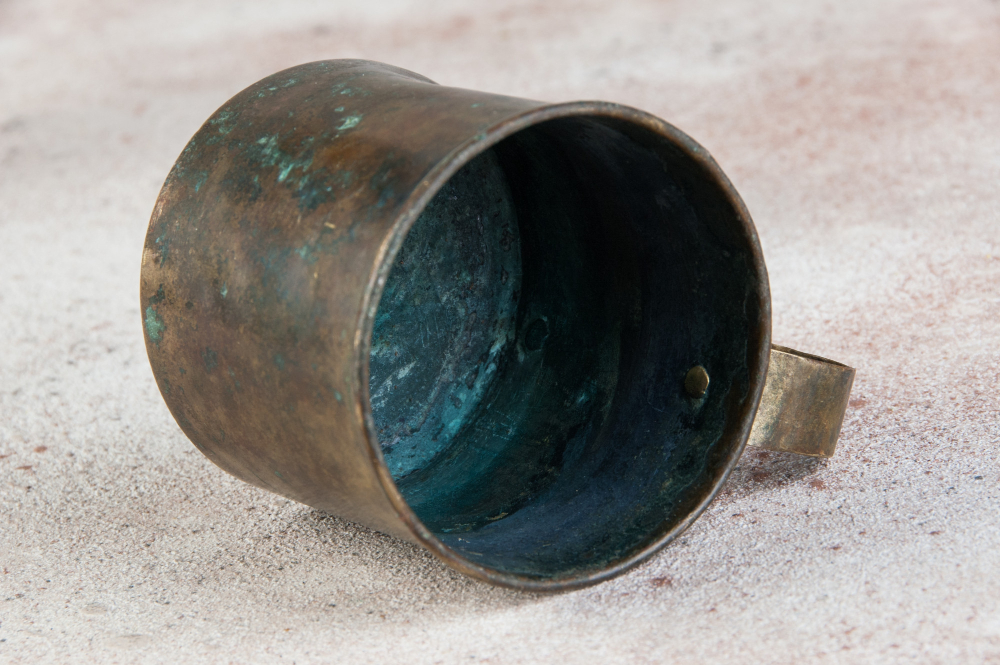Copper has long been cherished for its beauty and functionality in the kitchen, but over time, it undergoes natural changes that can either add to its charm or detract from its appeal. For chefs and cooking enthusiasts, understanding the science behind copper tarnish and patina can help maintain its beauty and prolong its use. Here, we explore the causes of tarnish, the difference between tarnish and patina, and how to prevent unwanted discoloration.
What Causes Copper to Tarnish?
Copper tarnishes due to chemical reactions with the environment. Initially, it reacts with oxygen in the air, forming a layer of copper oxide. When moisture, carbon dioxide, or sulfur compounds are present, further reactions can occur:
-
Moisture and Oxygen: Copper oxide reacts with water vapor, leading to compounds like malachite (dark green) and azurite (blue). These distinct colors occur because malachite and azurite are crystalline structures that reflect light differently, resulting in their characteristic hues.
-
Sulfur Compounds: Sulfur in polluted air, often from industrial pollution or vehicle emissions, can react with copper to form copper sulfide, resulting in a black tarnish.
These reactions are natural but can be accelerated by high humidity, pollution, or exposure to acids and salts.
Patina vs. Tarnish: What’s the Difference?
While tarnish and patina both result from chemical reactions, their appeal and characteristics differ:
-
Tarnish: Tarnish is often seen as undesirable. It appears as a dull, discolored layer, typically reddish-brown or black, caused by oxidation and sulfur compounds. Tarnish can make copper look aged and neglected, and in kitchen use, it can diminish the visual appeal of cookware and may suggest a lack of cleanliness or care.
-
Patina: Patina, on the other hand, is often considered beautiful and desirable. This greenish or bluish layer forms over time and is prized for its aesthetic appeal. For chefs, patina enhances the character of copper items, adding a rustic and timeless charm that can elevate the presentation of their kitchen tools and cookware. It’s the result of extended oxidation and reactions with environmental factors like carbon dioxide and water. Famous examples include the Statue of Liberty, copper roofs on historical buildings, and well-loved copper cookware like frying pans or saucepots that develop a unique, greenish-blue sheen over time.
Preventing Tarnish on Copper Items
To keep your copper cookware and utensils looking their best, consider these preventive measures:
-
Clean Regularly: Frequent cleaning removes residues that can accelerate tarnishing. The acidity of lemon juice effectively dissolves tarnish, while salt acts as a mild abrasive to scrub away discoloration. A paste made from flour, salt, and vinegar combines gentle abrasion with the cleaning power of acetic acid, ensuring safe and effective maintenance for your copper items.
-
Dry Thoroughly: After cleaning, always dry your copper items completely. Moisture is a catalyst for tarnish.
-
Apply a Protective Layer: A thin coat of mineral oil or beeswax can seal the surface and slow oxidation. Reapply this protective layer every few months or after each thorough cleaning to maintain its effectiveness.
-
Store Properly: Keep copper in a dry, low-humidity environment. Use acid-free tissue paper or cloth to wrap items when storing them, and avoid contact with materials like certain plastics or treated wood that could transfer moisture or chemicals to the copper.
-
Avoid Harsh Chemicals: Use natural cleaning methods and avoid abrasive scrubbing that could damage the surface. Avoid using harsh chemicals like ammonia or bleach, as they can cause discoloration or etch the surface of copper. For example, learn how to clean copper mugs safely and naturally using household ingredients.
Conclusion
By understanding the chemistry behind tarnish and patina, chefs can appreciate copper’s natural evolution while leveraging this knowledge to improve maintenance practices and enhance the presentation of their kitchen tools, creating a more appealing and professional cooking environment. Whether embracing the beauty of patina or maintaining a polished look, chefs can follow practical steps like regular cleaning, applying protective layers, and mindful storage to ensure copper’s longevity and charm.

